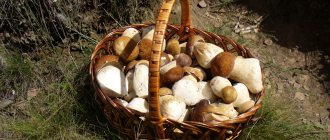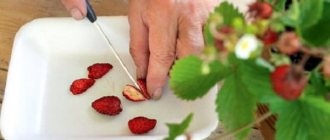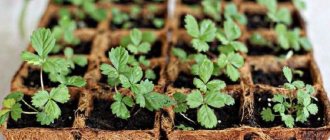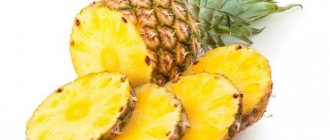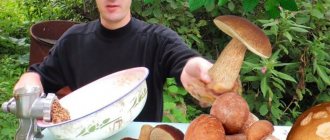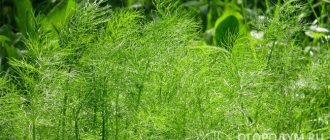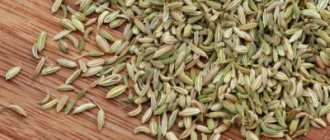Growing strawberries, also called garden strawberries, has become increasingly popular in recent years. And this is not surprising, because the fruits of this widespread crop are not only extremely tasty, but can also bring a certain profit. There are several ways to obtain strawberry seedlings, each of them has its own strengths and weaknesses. But planting strawberries with seeds for seedlings still deserves special attention.
Planting strawberries with seeds for seedlings
The benefits of growing strawberries from seed to seedlings
At first, it may seem quite difficult to grow strawberry seedlings from seeds. The seeds of this crop take a long time to germinate, and the shoots sometimes wither. However, having the necessary knowledge and having mastered a simple planting technique, in the future you can always grow strawberries in this way. Moreover, it has many advantages:
- Seeds can be stored for a long time, unlike seedlings.
- It's easier to choose the variety you need.
- The price of seeds is several times lower than the cost of seedlings.
- The name of the strawberry variety and its properties will be precisely known.
- One berry produces many bushes.
Advice! It is better to buy strawberry seeds before February, as later they may no longer be available for sale.
If you are not sure of a positive result, you should not buy elite varieties at an expensive price. When purchasing seeds on the market, you should pay attention to the expiration date.
Collecting your own seed material
Garden strawberries are often cross-pollinated. This property should be taken into account when collecting your own seeds. Some believe that to update a variety it is enough to take berries from your own plot or grow new specimens from purchased strawberries. It must be clearly understood that seedlings that grow from seed material collected in this way will have qualities different from those inherent in the mother plant.
Seeds from artificially bred hybrids (F1) may not germinate at all
Breeders act in this scientific and experimental way, creating and developing samples for breeding new varieties on experimental fields, but, undoubtedly, in laboratories there are more opportunities for analysis, testing and high-quality selection.
Buy seeds or choose from berries?
- Material for sowing can be purchased in specialized stores. It is better to buy seeds with a shelf life reserve. In addition, for insurance purposes, you can purchase several varieties from different companies.
- You can propagate small-fruited garden strawberries yourself. To do this, take overripe berries, cut off and throw away their spout and top part, since in these places the seeds are of poor quality. The remaining part of the fruit is crushed and filled with warm water. The pulp floats to the surface and is poured out with water. Strawberry seeds remain at the bottom. They are dried on a napkin and then packed in a paper bag.
Advice! You can also get seeds from frozen fruits, but they must be used immediately.
Stage No2. Deciding on varieties
So, if you are planning to get healthy and strong seedlings, you should not use the first strawberry seeds you come across. There are several proven, so to speak, options, let’s consider each of them in more detail.
- Small-fruited remontant strawberries (both hybrids and varieties) are sold in almost every specialized store. It is relatively cheap, so you will have the opportunity to experiment with new products every year and choose only the best options for yourself.
- Large-fruited garden strawberries are also popular, but they are also quite expensive. But the seedlings from such seeds turn out strong and healthy.
- Seeds collected with your own hands . Obviously, they need to be collected not from F1 hybrids, but from varieties - only in this case the quality of the offspring will be in no way inferior to the parent plants.
The best strawberry varieties for growing seedlings
Method for collecting strawberry seeds for seedlings
Below is a more original way to collect strawberry seeds at home.
Video - An original way to collect strawberry seeds
Selecting a variety and purchasing seeds
Before purchasing, it is important to decide which variety of strawberries is best to plant on your plot.
- Remontant varieties are capable of producing several harvests in one season, but their fruits are not as fragrant and sweet.
- Hybrid varieties have the largest berries, but such strawberries require more fertilizer than regular ones.
Different varieties of strawberries differ in taste, so you need to choose them according to the purpose of use. Sweet varieties are grown for fresh consumption, and more sour berries are chosen for harvesting for the winter.
Strawberries come in many different varieties, so gardeners can choose any they want.
Which varieties are best propagated by seeds?
Special hybrids of modern selection.
In the store you can purchase branded seeds: Russian size, Moscow delicacy, S-141, World delicacy, Home delicacy, Grandian, Ellan, Florian, Russian Giant (Gavrish), Pink Dream (Sedek), Temptation (Aelita), Nastenka, Lizonka , Sashenka.
Moscow delicacy F1 . This hybrid strawberry variety belongs to the remontant type. The berries are large in size and taste sweet. Fruiting earlier, up to 1.5 kg of berries can be collected from one bush. The plant has a beautiful appearance, so it can be grown in special vertical beds and even in pots.
Queen Elizabeth . This variety is not a hybrid, but belongs to the remontant type. You can collect seeds. The strawberry variety bears fruit throughout the season. Very aromatic large berries have a juicy raspberry color. Due to their good density, the berries tolerate transportation well.
Gigantella . The variety is not a hybrid and bears fruit once a summer. The weight of individual specimens can reach up to 120 grams. The fruits have good taste. Dry skin allows the berries to be preserved well.
Zephyr . This variety is popular due to its early fruiting and high yields. In addition, the plant does not require special care and can tolerate light shade.
Tristar . The berries of this variety are large and conical in shape. At the end of summer, Tristar can produce a second harvest of sweet fruits. Belongs to the dessert variety.
Diamond . Known for its resistance to various viruses. The fruits ripen early. From one bush you can collect up to 2 kg of delicious berries.
Dukat . Tolerates frost well.
Sometimes gardeners try to grow strawberries from seeds that they collected from their plot. However, most often such experiments give poor results. Therefore, it is better not to waste time and effort on such experiments, but to immediately buy seeds at a garden store.
FAQ
How to collect strawberry seeds? Remove the stems from ripe strawberries, place the berries in a mixer bowl, add a glass of water, cover the bowl with a lid and chop the berries - one minute is enough for this. Don't be afraid that the mixer blades will damage the seeds, this won't happen. Press the resulting mass through a fine sieve, then rinse what remains in the sieve with plenty of water to remove the pulp. Then transfer the mass to a jar of water and carefully drain the water: the soft tissue will go away, and at the bottom of the jar there will be clean seeds that need to be spread on a paper napkin and dried until flowable. Pack dry seeds, label them and store them until sowing. What is the difference between strawberries and strawberries?
A varietal garden berry is a strawberry, and a forest plant with small, round, rather than elongated fruits is a strawberry. Strawberries have tall flower stalks and leaves with more convex and lighter veins. Strawberries do not turn completely red. Garden strawberries are a monoecious plant, and strawberries have two types of flowers: male, sterile, and female, fruitful. In the forest you can find both wild strawberries and strawberries, but only garden strawberries are grown in cultivation.
Unfortunately, in everyday life these two names are often confused, so on Internet sites they usually write about strawberries, meaning garden strawberries.
Why don't strawberries sprout?
There may be several reasons why seeds do not germinate:
Non-sterile soil;
Poor pre-sowing seed treatment;
Poor stratification;
Storing seeds in a dry cloth;
Damage to sprouts of sprouted seeds.
That is, when preparing for sowing, you made one or more of the listed mistakes.
Treatment of soil and seeds for sowing must be thorough. Make sure that the napkin in which the seeds are wrapped for swelling is always damp. Do not allow sprouts to appear on the seeds, because when sowing they can easily be broken off, and if this happens, the seed will never sprout. Why do strawberry seedlings grow poorly?
The following factors can negatively affect the growth of strawberry seedlings:
Inappropriate or contaminated substrate;
Insufficient or excessive watering;
Lack of nutrients in the substrate;
Improperly organized or insufficient lighting;
Sudden changes in temperature and fluctuations in air humidity in the room;
Damage to the root system of seedlings during picking.
In order for seedlings to grow strong and healthy, you need to prepare carefully for sowing: study the recommendations of experts, purchase high-quality seeds, properly stratify and disinfect them and the substrate, and allow the seeds to swell.
After sowing, you need to create the necessary conditions for the seedlings and then properly and promptly care for them. Why do strawberry seedlings turn yellow?
This happens for the following reasons:
Direct sunlight hits the leaves and leaves burns;
Plants suffer from lack of moisture;
Seedlings were affected by disease or attacked by pests;
In an incorrectly composed substrate, seedlings lack nitrogen or microelements - iron, magnesium, boron.
Analyze your actions, determine the cause of yellowing leaves and eliminate it.
Mold has formed on the surface of the crops - why?
When the substrate is sterilized, all the microflora in it dies, but nature does not tolerate emptiness, so ubiquitous fungi begin to develop in the soil, forming mold on the surface of the soil in greenhouse conditions. To prevent this from happening, regularly ventilate the crops and monitor the formation of condensation under the coating. Loosen the soil very carefully so that the mold does not form a continuous film that prevents the soil from breathing. Sprinkle the surface with a thin layer of dry sand or wood ash.
You can spray the surface of the soil with copper sulfate, but when preparing the solution, try not to overdo it with the dosage.
Is it possible to grow remontant strawberries from seeds?
Of course you can. Prepare the seeds, soil and sow in the same way as regular varietal strawberries are sown - distribute the seeds over the surface without sprinkling with anything. Cover the container with transparent material, place the crops in a warm place and do not remove the covering until the first shoots appear. After this, regularly ventilate and water the young plants, and in the phase of formation of one or two pairs of true leaves, plant the seedlings in separate containers.
The conditions for keeping and caring for seedlings of remontant and regular strawberries are practically no different.
As soon as the earth warms up and the seedlings undergo hardening procedures, they can be transplanted into the garden bed. It is better to pinch off the first flowers of remontant strawberries in order to subsequently get a good harvest of large berries. Is it possible to grow seedlings from frozen strawberry seeds?
Why not try?
Nothing terrible happens to the seeds in the freezer; on the contrary: at low temperatures they will undergo stratification, and all you have to do is collect the seeds from the berries, disinfect them and keep them in a damp cloth to swell. Then sow the seeds from the freezer in the usual way into sterile soil, place the crops in the necessary conditions and wait for germination. Even if for some reason the seeds do not germinate, you will receive, although negative, invaluable experience. What varieties of strawberries can be grown from seeds?
From large-fruited strawberry varieties, you can grow Moscow Delicacy, Xima, Alyonushka, Lord, Festivalnaya, Fireworks, Holiday, Honey, Vima, Kokinskaya early by seed, and from remontant varieties - Crimean Early, Queen Elizabeth II, Garland, Seasons, Ali Baba, Yellow miracle.
You can grow seedlings from seeds collected from your own varietal strawberries, but hybrid varieties are not propagated by seeds.
When propagated by seed, hybrids produce plants whose fruits have characteristics of only one of the plants used to breed the cultivar, and often these are not the best qualities. Why did small-fruited strawberries grow from the seeds of a large-fruited variety?
This happens when seedlings are grown from seeds of not varietal, but hybrid strawberries. The fact is that hybrids, when propagated by seed, transmit the characteristics of only one of the parent varieties that were used to breed them. For example, they crossed large-fruited strawberries of mediocre taste with a small-fruited variety with sweet and aromatic berries. The result is a hybrid with large, fragrant and sweet fruits. You took the seeds of this hybrid, sowed them and got small-fruited, tasty strawberries or large-fruited, tasteless ones.
Therefore, only varietal strawberries can be grown from seeds, and hybrid ones are best propagated vegetatively.
When to plant strawberry seeds
The seeds of this crop are too small. Their quantity in packages varies. It all depends on the variety of strawberry, as well as on the production costs of producing seeds.
Depending on the climatic region in which the site is located, there are different times for preparing and planting strawberry seeds. In addition, due to serious climate changes in the last decade, it is better to take into account the experience of experienced gardeners.
- In Kuban, strawberry seeds begin to be sown in the last ten days of February or in the first ten days of March.
- Gardeners in central Russia begin sowing seeds in early to mid-February.
- In Siberia - in the first ten days of February.
Some gardeners sow seeds at the end of January. In this case, the seedlings will be well strengthened by the time they are planted in a permanent place.
The most serious problem with planting seeds during the winter months is the lack of daylight. For this reason, many sprouts do not survive or develop poorly. Young shoots need daylight for 10-12 hours. Therefore, they are provided with additional lighting, which should not overheat the seedlings. At night, the lamps are turned off.
Important! 30-45 days before sowing seeds, it is necessary to carry out stratification.
Stage No1. Determining the timing of sowing
If you visit your dacha only on weekends, then you can sow strawberries at the end of February or beginning of March. The fact is that in winter there is always time for thorough care of seedlings, and in this case you get the plants out of the garden before the drought (which is especially important if the summer in your region is hot). You can also use peat tablets for home cultivation, but more on that later.
Strawberry seedlings
If you live in a suburban area throughout the summer and are able to pay due attention to caring for your plantings, you can sow strawberries in March or June. Even later sowing is allowed if the summer is not hot. But the seedlings, most likely, will not have time to grow enough to be transplanted to a permanent place before the end of the season. This means that they will spend the next winter in pots or boxes.
Stratification
It is known that after the stratification procedure, seeds sprout faster. To do this, the seeds are kept in the cold for 2 weeks. There are two ways to do this:
- Pack strawberry seeds in paper bags and place them in the refrigerator for 14 days. After this, you can sow the seeds.
- Stratification is carried out after the seeds are sown in the soil. The containers are covered with a film in which several holes are made or a transparent lid with holes for air access. Boxes with crops are placed on the top shelf of the refrigerator or buried in the snow outside. After 14 days, containers with crops are brought into a warm room.
Preparation
Preparations for planting strawberries for seedlings begin long before the season. You can use your own material or purchase the desired variety at a gardening store. Additionally, they buy or bring soil and suitable containers from the site.
Seeds
Seeds are bought or extracted from the berry, soaked and germinated.
The process of preparing seeds for sowing is divided into 3 stages:
- Calibration (sorting) . For planting, take healthy, solid material with a diameter of at least 2 mm.
- Soaking . The seeds are laid out on the surface of cotton pads or fabric and moistened. Leave in a warm place until swelling.
- Germination . To germinate strawberry seeds, use a plastic container with a lid. A substrate with swollen material is placed in it, closed and placed in a warm room.
To speed up germination, experienced gardeners use cold stratification (simulating winter conditions). The tray with the swollen seeds is placed in the refrigerator for 2–3 weeks.
If you use your own planting material for sowing, it is disinfected in a weak solution of potassium permanganate for 20–30 minutes.
Priming
You can grow healthy strawberry seedlings only in high-quality soil. If there are fungal spores in the ground, the seedlings will begin to get sick and die.
It’s easy to prepare the soil mixture yourself:
- Take soil from the site, add one part of peat and sand.
- Mix the ingredients.
- Pour a glass of wood ash into a bucket of prepared soil mixture.
- Calcine the soil in an oven at 50–60 °C for 15–20 minutes or freeze it by placing it outside.
Stores sell ready-made substrate for sowing. The mixture contains the necessary nutrients, is disinfected and safe for seedlings.
Immediately before sowing, the soil is spilled with Fitosporin. It protects the root system from diseases and parasites and increases germination. The solution is prepared from 10 liters of water and 5 g of product.
Capacities
Gardeners choose paper or plastic containers for strawberry seedlings.
It is better to sow strawberries in special containers. In the apartment they most often use:
- Plastic cassette. Sold in gardening stores.
- Wooden box.
- Paper, plastic cup.
- Peat pot. It is convenient because the seedlings are planted in a permanent place along with the container. The pot decomposes in the soil and feeds the strawberry root system.
- Peat tablet. After watering it swells, replacing the soil mixture. The best option for sowing if there is no soil at hand.
Strawberries can be planted in cake or cookie packaging. This is not so convenient, but with proper care the seedlings will feel no worse than in a special container. The only requirement for such dishes is that there must be holes in the bottom so that water does not stagnate.
Selection of capacity
Strawberry seeds are sown in containers in which the seedlings will germinate. To do this, you need to prepare such containers in advance. There are several types of containers for growing strawberry seedlings.
Carton boxes
You can buy such boxes in any store. It is important that the cardboard is thick. Such a container will not cost anything, but it quickly deteriorates from moisture.
Tetra packs
You can pre-assemble packages in which milk, juices and other drinks are sold. The inside of these cardboard boxes is covered with a special waterproof coating.
You can freely buy them in the store, and they do not get wet when watering the soil. The disadvantage of this container is that it can only be used once.
Plastic glasses
Many products are sold in such cups: soft cheeses, yoghurts, dairy products, etc. Before use, you just need to wash them well and disinfect them. The advantages of cups include their resistance to moisture, retention of shape, and reusable use. The downside is that you need to collect a lot of these cups.
Plastic bottles
Available materials for containers are plastic drink bottles. The top of the bottle is cut off and the bottom is used for sowing seeds. The top part of the container can be used as a lid for seedlings. This container has many advantages: functionality, can be used for more than one season, it does not lose shape from moisture.
Plastic containers
Boxes of cakes, cookies, sweets and other confectionery products are available for purchase by everyone.
In addition, they have transparent lids. Disadvantage of containers: they are very fragile, they are used only for one season.
Wooden boxes
Boxes can be made from boards with your own hands. They are reliable and can be used for many years.
However, such containers must be disinfected before use. In addition, you will have to buy boards to assemble the boxes.
Important! Any container must have holes for drainage. Excess moisture should not accumulate in the soil, but drain into the pan.
When to sow strawberries for seedlings in 2022
Sowing strawberries for seedlings in January 2022
| Mon | VT | SR | Thu | PT | SB | Sun |
| 1 | NL | |||||
| 3 | 4 | 5 | 6 | 7 | 8 | 9 |
| 10 | 11 | 12 | 13 | 14 | 15 | 16 |
| 17 | PL | 19 | 20 | 21 | 22 | 23 |
| 24 | 25 | 26 | 27 | 28 | 29 | 30 |
| 31 |
Dates for sowing strawberries for seedlings in February 2022
| Mon | VT | SR | Thu | PT | SB | Sun |
| NL | 2 | 3 | 4 | 5 | 6 | |
| 7 | 8 | 9 | 10 | 11 | 12 | 13 |
| 14 | 15 | PL | 17 | 18 | 19 | 20 |
| 21 | 22 | 23 | 24 | 25 | 26 | PL |
| 28 |
Sowing strawberries in March 2022 for seedlings
| Mon | VT | SR | Thu | PT | SB | Sun |
| 1 | NL | 3 | 4 | 5 | 6 | |
| 7 | 8 | 9 | 10 | 11 | 12 | 13 |
| 14 | 15 | 16 | 17 | PL | 19 | 20 |
| 21 | 22 | 23 | 24 | 25 | 26 | 27 |
| 28 | 29 | 30 | 31 |
Sowing strawberries for seedlings in April 2022
| Mon | VT | SR | Thu | PT | SB | Sun |
| NL | 2 | 3 | ||||
| 4 | 5 | 6 | 7 | 8 | 9 | 10 |
| 11 | 12 | 13 | 14 | 15 | PL | 17 |
| 18 | 19 | 20 | 21 | 22 | 23 | 24 |
| 25 | 26 | 27 | 28 | 29 | NL |
Growing strawberry seedlings in May 2022
| Mon | VT | SR | Thu | PT | SB | Sun |
| 1 | ||||||
| 2 | 3 | 4 | 5 | 6 | 7 | 8 |
| 9 | 10 | 11 | 12 | 13 | 14 | 15 |
| PL | 17 | 18 | 19 | 20 | 21 | 22 |
| 23 | 24 | 25 | 26 | 27 | 28 | 29 |
| NL | 31 |
The color in the table indicates what day it is for sowing:
| Great | Good | Normal |
| Bad | Horrible |
Never sow, plant or replant plants during the new moon or full moon - during these lunar phases, all the juices flow either to the top or to the rhizome, so the normal development of any crop in the future will be greatly hampered.
Soil preparation
Particular attention should be paid to preparing high-quality soil in which seedlings will be grown from seeds. Ready-to-use substrate is sold in stores. But you can prepare it yourself:
- Non-acidic peat, vermicompost, coarse sand are mixed in a 3:1:1 ratio.
- Turf soil, peat and coarse sand are combined in a ratio of 2:1:1.
In any case, it is necessary to add a small amount of ash and humus to the soil mixture.
- The finished soil should be steamed to get rid of pest larvae and pathogens of various infections. To do this, the mixture is kept over hot steam for 30 minutes. Then, the soil is left alone for 14-20 days to allow beneficial bacteria to restore their numbers.
- The next stage of soil preparation will be sifting. Strawberries love airy soil. Therefore, this procedure will make the earth soft and lush. After this, the mixture can be poured into containers.
Possible problems
There are many problems with propagating strawberries using seed material, but all of them can be solved. Mold often grows on the soil in a closed container. To get rid of plaque, carefully remove it with a match. The mini-greenhouse is left open to dry the soil surface. In the future, the seedlings are ventilated more often and watered less.
If the sprouts still do not appear, you need to purchase better material and sow again. It’s worse if already sprouted plants die. This means that the care was incorrect - insufficient or too much watering, irregular ventilation, contamination of planting material even before sowing. You need to find your mistakes in order to avoid them in the future. And replant the strawberries.
Sometimes the leaves of the seedlings turn pale or yellow. This means that the plants get a lot of sun. Shoots need to be shaded
Sowing seeds
Now you can start planting strawberry seeds. The soil mixture in pots needs to be well moistened. Using tweezers or a damp sharp stick, place the seeds on the surface of the soil. At the same time, we maintain a distance between seeds of 4 to 5 cm.
There is no need to cover the seeds with soil. It is better to cover them with a 2.5 cm layer of snow. Cover the containers with a transparent lid and place them in the refrigerator or in a snowdrift near the house for 14 days. At the moment of melting, the water will pull the seeds into the ground.
Some gardeners germinate seeds before sowing, which makes it possible to get seedlings faster. The seed is soaked in warm, clean water for 2-3 days. At the same time, the water needs to be changed periodically. Place the swollen seeds on filtered paper in a plate. Wrap the plate in a plastic bag and keep warm.
When the seeds hatch, they can be planted in the ground. Thanks to this method, empty seeds can be detected.
After sowing, the containers are covered with transparent material to create favorable conditions for germination.
Instructions for sowing in a container
After germination of strawberry seeds, they are planted in boxes or containers. To do this, you must adhere to some rules:
- The container in which the seeds will be planted must be at least 10 cm high.
- It needs to be thoroughly treated with a weak solution of manganese, and can also be wiped with alcohol for disinfection. Dry well.
- For a wooden container, it is better to use film to prevent its bottom from rotting. Place plastic film on the bottom of the box and make holes for drainage, both in the bag and in the bottom of the box. This is not done in a plastic container.
- The container is filled with a layer of prepared soil up to 8 cm and compacted slightly.
- Using a spray bottle, moisten the soil.
- After this, the seeds are immediately laid out with tweezers on the surface of the ground at a distance of 2-4 cm from each other. There is no need to deepen them, but lightly press them down and sprinkle them with an earthen mixture about 5 mm thick. There is no need to cover unsprouted seeds. They need to be lightly pressed into the soil and the containers placed in a warm and bright place for the seeds to germinate.
- Periodically, the crops should be moistened with a spray bottle. If you sow ungerminated seeds, it is recommended to cover the containers with a transparent lid or film. After the appearance of young shoots, the shelter must be removed.
- The first shoots appear after 10-15 days, but can hatch after 5-7 days. In some cases, young shoots appear within 30 days.
Watch the video! How to grow strawberries from seeds
Advice from experienced gardeners
Over a long period of growing strawberries from seeds, experienced gardeners have developed gardening tricks. Many are happy to share their experiences.
- When planting strawberries from separate containers, you should water them thoroughly before transplanting.
- Before transferring to a permanent place, the sprouts should be dipped in the HB-101 solution (3 drops per 1 liter of water) for 10 hours to strengthen.
- For sowing, high-quality planting material is used.
- To activate the growth of seedlings, it is necessary to regularly use a growth activator.
- After the sprouts appear, the lid of the container should be opened gradually so that the seedlings do not die due to stress from the new conditions.
- To strengthen strawberry bushes, it is better to remove the flowers in the first season and harvest a good harvest the following year.
Growing strawberries from seeds is very painstaking and long work, but as a result you can get strong, healthy seedlings. If you start sowing in winter, then already in the first season you can taste delicious juicy berries.
Instructions for sowing in peat tablets
A convenient method for sowing strawberry seeds for seedlings is peat tablets. They can be purchased at a garden store.
- It is advisable to buy tablets approximately 2.4 cm in size.
- Fill the material with settled or melt water and leave for 2 days.
- After swelling, peat tablets increase significantly; they are placed in a shallow container, such as a tray.
- A small depression is made in each tablet, into which one grain is placed, lightly pressing into the peat.
- The container with peat is covered with transparent material and placed in a warm and bright place (window sill).
- Peat tablets are periodically moistened. It is important to ensure that they do not dry out.
- When shoots appear, the shelter must be removed.
- The seedlings should be kept in tablets until their roots grow through the walls of the peat.
Advice! Strawberry seeds can be planted in peat tablets without prior germination. Otherwise, they are not covered, which complicates the procedure for moistening them.
When the roots grow through the peat, the plant is transplanted into a separate container with soil. 1 seedling is transplanted into cups.
Diseases of strawberry seedlings and their treatment
With good care, strawberry seedlings do not suffer from diseases, but with chronic waterlogging they can be affected by blackleg - rot of the root collar of seedlings, which manifests itself from the beginning of seed germination to the stage of development of 2-3 leaves. Against the background of high humidity, within 4-6 days the base of the stem turns black, softens, breaks, and the seedling lies down.
If the disease is widespread, pick up healthy seedlings in separate sterile containers into disinfected soil, place them in a warm place and protect them from direct sunlight. As soon as they take root, the temperature can be lowered, and a fungicide (Fitosporin, Baktofit or Maxim) must be added to the water for the first watering.
It is inspiring that seedlings growing in peat tablets practically do not suffer from blackleg, since the tablets are disinfected and impregnated with fungicide.
Sometimes, at home, seedlings can become sick with powdery mildew, and then a whitish coating appears on its leaves and stems, which gradually darkens and becomes dense and brown. Affected plants stop growing and die. The cause of infection may be:
- excessive fertilizing with nitrogen fertilizers,
- sudden temperature fluctuations,
- air humidity.
To combat powdery mildew on strawberry seedlings, use solutions of biofungicidal preparations - Alirina-B, Fitosporin, Gamaira or Planriz - prepared in accordance with the instructions.
Diseases and pests of strawberries and their control
In conditions of low humidity, strawberry seedlings can be occupied by spider mites, which make small punctures in the leaves of the seedlings and suck out the cell sap through them. In addition, ticks carry incurable viral diseases, such as mosaic. They destroy pests with an acaricide solution - Aktary, Aktellika, Karbofos, Fitoverma.
Caring for strawberry seedlings
At first, young shoots grow slowly. After the cotyledons open, true leaves begin to develop.
- If tender roots stick out on the surface of the soil, it is advisable to cover them with earth. But this must be done with extreme caution, raking the soil with a toothpick.
- Moisten the soil only as needed. To do this, use a syringe, spoon or sprayer.
- Young seedlings develop well at an air temperature of 15-18 degrees and good lighting.
- The film is not removed from the container for some time. Sudden opening of sprouts can lead to their death. It is necessary to gradually accustom the plant to changes in microclimate.
- To prevent the moisture that collects on the film from reaching the seedlings, you should sometimes lift it for ventilation. In addition, drops of condensation must be wiped off regularly.
- When the first leaves begin to appear, airing is carried out more often and longer, gradually increasing the time. After 2–3 true leaves appear, the shelter is removed. If necessary, dive into small containers measuring about 5x5 cm.
- If the strawberry bushes do not interfere with each other, then you can leave them without picking. Sometimes small, tender seedlings die after transplantation.
- Young plants can already survive even zero air temperatures. However, at this time they need good lighting. Starting from April-May, containers with seedlings can be transferred to a greenhouse or closed balcony.
How to care for garden strawberry seedlings
It is necessary to maintain optimal conditions and care for seedlings at home, both before and after germination. You cannot ignore the needs of such a capricious plant, otherwise success in growing a crop from seeds will not be achieved. So, let's consider the main aspects and rules for caring for garden strawberry seedlings:
- Mini-greenhouse. Before emergence, it is necessary to ventilate the greenhouse daily for 15-25 minutes, removing the covering material and wiping off condensation from it. As soon as you see the first plants hatching, you need to remove the glass, lid or film. But this must be done strictly gradually to minimize stress: first you need to open the container for 30 minutes, then increase the time over three days, and then remove the lid, glass or film forever.
- Temperature conditions. The optimal temperature for strawberries after planting is 23-25 degrees Celsius, and then, after germination, 20 degrees Celsius (lowering t will help avoid stretching of plants).
- Lighting. It is very important for this culture, so pay special attention to this aspect of care. Seeds germinate in the light, so immediately after planting you need to transfer the container to a bright windowsill.
- From the first day of emergence, be sure to add light to strawberry seedlings in the morning, evening and on cloudy days. For additional lighting, a phytolamp should be used, or at least an LED lamp. A 12-14 hour daylight period should be maintained.
- Watering. In this matter, you need to observe moderation - excessive watering can provoke the occurrence of fungal diseases (including the dangerous black leg) or mold. But just like waterlogging, you should not allow the soil to dry out, which can be disastrous. Basic rules for watering strawberries at home that must be followed: Water can only be used that is settled, clean, and at room temperature. Liquid straight from the tap can do more harm than good.
- Before germination, you should water with a syringe so that the water pressure does not wash out the seeds.
- When the shoots appear, the number of waterings should be increased slightly, and this should be done using other tools, for example, a small syringe, a syringe (not a watering can or spray bottle). But water should not fall on the plants themselves and erode the soil around the roots; apply moisture carefully.
- The main guideline that will help determine the frequency of watering is soil moisture; it is necessary to constantly maintain moderate (!) soil moisture.
By the way! The first strawberry seeds germinate approximately 14 days after sowing. But the speed and speed of germination depends on the quality of care.
Maintaining all the above conditions will help you grow healthy, good, strong strawberries at home.
Preparing seedlings for planting in the ground
Before planting a plant in open ground, it is necessary to carry out agrotechnical procedures. This is necessary so that the bushes can more easily tolerate transplantation:
- Hardening. 14-20 days before transplanting strawberry seedlings into open ground, they are taken out into the fresh air during the daytime. In the evening, the seedlings are brought into the house. This way, the plant will be able to adapt to sunlight and new air temperatures.
- Treatment with solutions. When a plant is infected with powdery mildew, a white coating appears on the leaves. In this case, the bushes need to be treated with biofungicidal agents. Spider mites are destroyed using an acaricide solution.
Criteria for preferences and benefits
The choice of seed material on the market is quite wide:
- For fresh consumption, sweet varieties of the crop with the highest sugar content are bred;
- for sale, as a rule, they pay attention to early and remontant varieties with dense, large fruits that have increased shelf life and transportability;
- For preservation and preparation, berries with dryish, sour pulp are often used.
Also of great importance are the climatic and technical conditions of the place where cultivation and reproduction will take place - in open ground or in greenhouses.
Parameters such as the unusual color, size and shape of the berries are also of interest.
The issue of price plays an important role - sometimes buying seeds of an expensive foreign or rare variety is much cheaper than buying grown bushes. Beware of buying fakes so as not to be disappointed with the result. Buy seeds from agricultural institutes or specialized stores.
Planting strawberry seedlings in open ground
The area for strawberries needs to be prepared in advance.
For 1 sq. m you can add 6-10 kg of humus or compost.
100 g superphosphate + 120 g potassium sulfate.
In the garden bed, the bushes are arranged in double rows, the distance between such rows is 40 cm and between the bushes 20 cm. The second bed can be set back from the first by a distance of 60 cm. After the strawberries have produced their first year’s harvest, you need to dig up every second bush, planting a new bed according to the scheme 40x40x60. The depth of the beds should be the same as the depth of the container, approximately 15 cm, in which the seedlings develop. The deviation can be only 1 cm.
We carefully transfer the strawberry bush along with the earthen ball into the prepared holes. We fill the plant with soil so that the top of this lump remains on the surface. How to plant strawberries correctly can be seen in the figure below.
If the area is exposed to direct sunlight, then you need to create light shade for the seedlings at first until they get stronger.
Each bush should be watered with 0.5 liters of water. At the same time, an organic stimulant (Epin or Fitosporin) is added to it. After the plants have been fed, it is necessary to mulch the ground around the bushes with humus. Mulch is applied in a layer of 1 cm.
Using these rules for growing strawberries, fruits can be obtained already in the first year of planting.
Picking seedlings
When 3 true leaves appear on young bushes, the plants can be transplanted into separate containers and then accustomed to the air of the apartment. Picking stages:
- Before picking, it is advisable to spill the container with strawberries with a solution of HB-101 (1 drop of the drug per 500 ml of water).
Vitalizer NV-101 is diluted at the rate of 1–2 drops of the drug per liter of water
- We prepare individual containers for each bush and fill them with loose nutritious soil mixture. To do this, mix:
- 10 liters of purchased peat soil;
- 1 liter of vermicompost;
- 1 liter of vermiculite;
- 2 liters of soaked coconut substrate.
It is very convenient to plant strawberry seedlings into separate cells on a pallet
- We pry each bush from the nursery with a small fork and transplant it into an individual pot, lightly water it with the HB-101 solution. Make sure the strawberry heart is level with the ground.
We plant strawberry seedlings one in each cup.
- We spray the picked seedlings with Epin or HB-101 to relieve stress and better rooting. If the seedlings grew under a lid before picking, then cover the pots with film and gradually adapt them to the air in the room over the next few days.
I acclimate my strawberry seedlings to the dry air of the apartment immediately after picking, spraying the plants every 2-3 hours with water in which the drug HB-101 is diluted. All plants tolerate pickling well and quickly take root.
If strawberry seedlings were grown in peat tablets, then you need:
- Cut the tablet and remove the mesh.
- Place the plant with a lump of earth in a pot.
- Sprinkle with earth.
After transplanting, caring for strawberries comes down to regular watering, periodic fertilizing and, if necessary, adding soil. Strawberries love water very much, especially if they stand on a hot windowsill or in the sun. Then small pots need to be watered every 2-3 days.
You can feed strawberries 2 weeks after picking, but the dose of fertilizer should be halved. It is best to use those preparations where nitrogen predominates.
I feed all strawberry seedlings every 10 days with Gumistar, diluting them according to the instructions. The plants are developing very well, growing strong and healthy.
Strawberries are very fond of feeding with Gumistar, which contains nutrients and growth stimulants.
Video: picking strawberries
Aftercare
- Depending on the weather, water the bushes every 2-3 days.
- After watering, the soil around the plant is slightly loosened. Care must be taken to ensure that it does not settle or become compacted.
- Remove weeds regularly.
- If necessary, treat with insecticides to control pests.
- Fertilizers are applied after the first harvest of berries has been harvested. Typically, gardeners use the following fertilizer of natural origin: chicken manure - 2 spoons, water - 10 liters.
At the end of September, in anticipation of imminent frosts, strawberries are covered with humus, a layer no thicker than 1 cm. In addition, the bushes are insulated with dry leaves and grass or sawdust. If it often rains with strong winds in the fall in the region, then it is advisable to cover the plant with film. It is necessary to make holes in it for air to enter.
Start of forcing
Each plant obeys the immutable laws of nature associated with certain seasonal periods of the growing season. Therefore, in order to start the process of awakening the sprouts and at the same time slightly soften the hard shell of the slow-germinating achenes, before sowing at home you need to create conditions as close as possible to natural ones, that is, cold hardening or, more correctly, stratification.
According to reviews from experienced gardeners, seeding material of small-fruited varieties does not require preliminary stratification and germination
Depending on the region, at the end of January - beginning of February, the seeds begin to be prepared for sowing.
Some summer residents calculate how much daylight hours have increased, others rely on lunar calendars and choose favorable periods, although the effectiveness of this information has not been proven. The success of an event depends, by and large, on a whole range of factors. Primary seed preparation begins with soaking. To do this, they are scattered on a damp cloth and left to soak in moisture for at least a day in a warm room.

